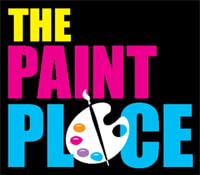There are many different types and styles of paint brushes, and beginning painters can easily become overwhelmed. Each type of brush is best suited to specific painting techniques, and many artists have a small collection. When you are starting out, though, it is best to stick to just two brushes—one mid-range round brush and one mid-range flat brush. As you progress, you can try out different brushes and find the ones that most appeal to you. Here is a guide to your options.
Basic Types of Acrylic Paint Brushes
There are eight basic types of paint brushes for acrylics. Here is a short guide to each type:
Round: A round brush is an excellent multitasking tool. You can use it for sketching, detail, and filling in small areas. Depending on how you thin the paint, you can even control the width of the lines it creates.
Pointed Round: A pointed round brush comes to a sharp point at the tip. A pointed round brush is ideally suited to detail work.
Detail Round: A detail round brush is shorter and thinner than a round brush. Like a pointed round, it is primarily used for detail work.
Flat: A flat brush is best for bold strokes, color washing, and filling in large areas. It is also an ideal tool for varnishing.
Bright: With short bristles and slightly curved edges, a bright brush lays down heavy, thick paint. It’s best used for short, carefully placed strokes.
Angular Flat: With a sharply cut angle to its bristles, an angular flat brush is best for corners and curves. However, it can also be used like a regular flat brush if needed.
Filbert: A cross between a flat and a round brush, a filbert is best for soft edges and blending.
Fan: Named for the fan-like shape of its bristles, a fan brush is best used for texture and feathering. These brushes are prone to clumping, so it is important to choose one with very strong bristles.
Style Considerations
Within each of the 8 basic types of acrylic paint brushes are a wide variety of individual styles. There is no right or wrong when it comes to style, only the choices that feel best to you. Style considerations include, but are not limited to:
Brand: Some artists are brand-loyal, while others purchase based on other characteristics. Try out a few brands to see what works for you, and do not fall into the trap of believing that more expensive is necessarily better.
Size: Paint brushes are sold by numbered size, but sizes are not standardized between manufacturers. It’s best to start with a medium sized brush and work your way up or down as you decide what you like. If you change brands, be sure to handle the new brush rather than assuming that you need the same size.
Handle Length: Longer handles are designed for working at a distance, while shorter handles are used for close work. However, very long or very short handles can be awkward to use. Start with something in the middle, and change brushes as you find the need to do so.
Hair Type: Although natural bristles are readily available, synthetics stand up better to acrylics. Unless you have a pressing reason to use a brush with natural hairs, plan to stick to synthetics.

